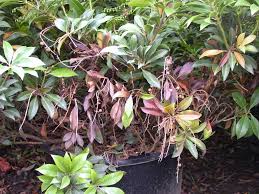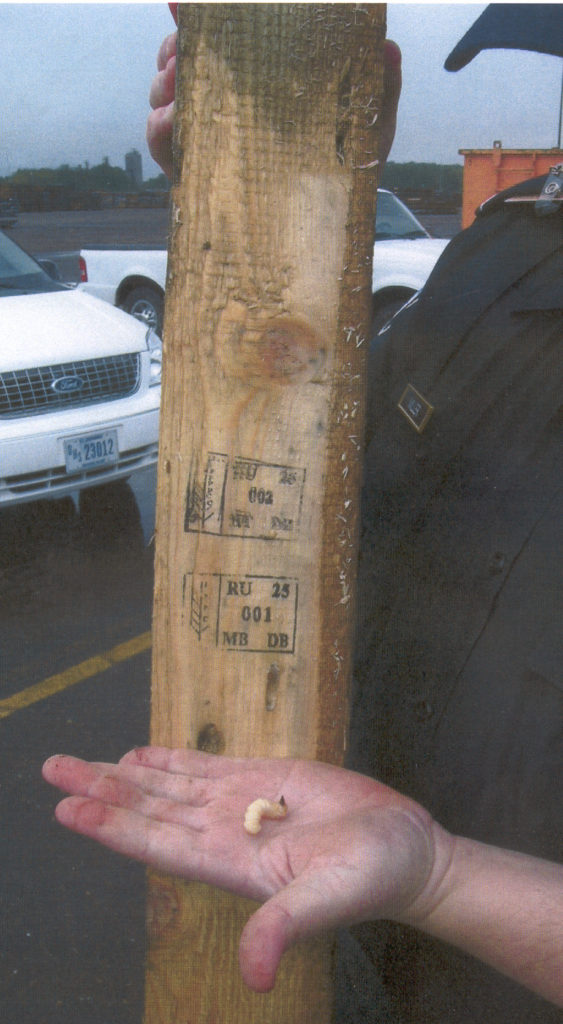In late July I participated in the annual meeting of the National Plant Board (NPB) – the organization representing the states’ phytosanitary agencies. USDA’s APHIS, DHS’ Bureau of Customs and Border Protection (CBP), and various industry associations also participated in the meeting. As usual, I learned lots of depressing developments.
A. Old problems continue to vex:
1) Sudden Oak Death in the Nursery Trade – Again!!!
As you might remember, spring 2019 saw an alarming number of plants infested by the sudden oak death pathogen (Phytophthora ramorum) shipped from west coast nurseries to nurseries in 18 states. Another major incident occurred in 2021. The California Oak Mortality Task Force (COMTF) newsletter for June 2021 reports that one nursery in Oregon shipped plants exposed to P. ramorum to big-box stores in 36 states — twice the number of states that received pathogen-exposed plants in 2019.
The first such incident was in 2004 – 17 years ago! Officials of the states that receive these infested plants are angry that every few years they must divert their resources from other duties to inspect nurseries in their states that have been exposed to the pathogen. They note that these “trace-forward” projects cost state governments money and prevent their carrying out other duties; they also impose significant costs on the in-state nurseries due to holds on sales. When infested plants are found, all these costs rise substantially.
The plant health official from Alabama noted that a single west coast nursery that had repeatedly been found to have infected plants shipped 29 lots of host plants to her state in spring 2021. As is clear from the COMTF article, other states also received thousands of plants that had been exposed to the pathogen. The Alabama official questioned why APHIS tilts so far toward a regulatory system that makes it possible for the “exporting” nurseries to ship. The result – too often – is that an infection at one small business can (repeatedly) impose high costs on hundreds of receiving nurseries and states. [I wonder whether anyone has considered a lawsuit against the source nurseries claiming damages? Would that be successful if the regulatory agencies approved the shipments because – at that time – their inspections had failed to detect the problem?]
Officials from the three west coast states, however, want to support their own nurseries’ efforts to relax regulations and maintain or open markets in the central and eastern states. They point to their own considerable efforts to inspect and certify the pest-free status of nurseries in their states.
Because of the different points of view among the states, the National Plant Board per se has never taken a position on the issue.
However, many states – and even APHIS Deputy Administrator El-Lissy – agree that something is not working. So APHIS is in the midst of reviewing its program, with input from NPB members. Such program reviews have been undertaken several times over the past 18 years. So far, they have never produced a program that effectively stops sales of pathogen-infested plants.
2) Contaminated Wood Packaging
Kevin Harriger of CBP reported that over the nine-month period October 2020 – June 2021, CBP intercepted 1,563 shipments that were in violation of ISPM#15, the international rule that requires that wood packaging be treated to kill pests. Most, or 1,148 shipments (73%), lacked the required mark certifying treatment. Four hundred fifteen (26%) of the total number of shipments had a live pest present. Nearly three quarters of the non-compliant shipments transported miscellaneous cargo. This is not a surprise: all of these characteristics are in keeping with past experience.
Meanwhile, APHIS Deputy Director El-Lissy said APHIS was working with importers, exporting countries’ departments of agriculture, and others to improve compliance. Apparently there were two high-profile incidents when shipments of car components were rejected because of ISPM#15 issues. I am trying to learn more about these incidents.
I recently blogged about the pest risk associated with incoming shipping containers and dunnage.
3) Asian Gypsy Moths (Tussock moths) Still Infesting Ships
Harriger also said that the period 2019-2020 saw the largest number of ships infested by Asian tussock moth eggs since the program began in 2012. [I am aware that the Entomological Society is searching for a new name for this group of insects.] On average, 12 of 100 approaching vessels was infested. CBP is using sophisticated models to identify regions within Asian ports where conditions exacerbate the risk of moth contamination. CBP can match individual ships’ loading records to this information to pinpoint which are most likely to be infested.
Oregon and Washington continue to find both Asian and European tussock moths in traps along the Columbia River. Such detections prompt eradication programs of varying expense and disruption.
[In April, I blogged about a report evaluating the risk posed by several Asian tussock moths; the report was prepared by experts under the auspices of the North American Plant Protection Organization.]
B. In addition to the arrival of new pests, there is an alarming spread of established ones:
1) Beech leaf disease
State phytosanitary officials reported detections of beech leaf disease (BLD) in Maine and Virginia. The devastating impact of BLD on this hard mast tree species is described here. BLD has now spread through much of southern New England (Connecticut, Rhode Island, Massachusetts) and up the coast to Maine. Connecticut reports that trees of all sizes are affected. Maine reports that the disease is widespread in the central coastal region.
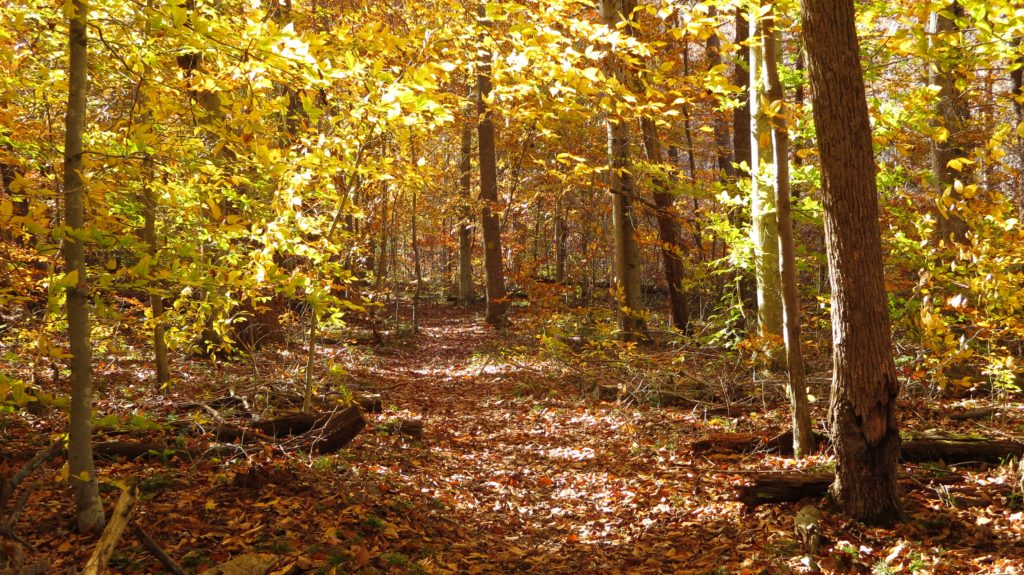
Virginia reported that the disease has been detected in Prince William Forest Park, a forested area south of Washington, D.C., managed by the National Park Service. This detection is too recent to say how widespread it is.
2) Laurel wilt
Kentucky’s plant health officer reported that laurel wilt disease has been detected on sassafras trees in Louisville, at the northern tip of the state and across the river from Ohio. He noted that a second host plant, spice bush, is in the nursery trade. While laurel wilt is not regulated, officials are concerned about its impact in natural forests. Neighboring states are concerned.
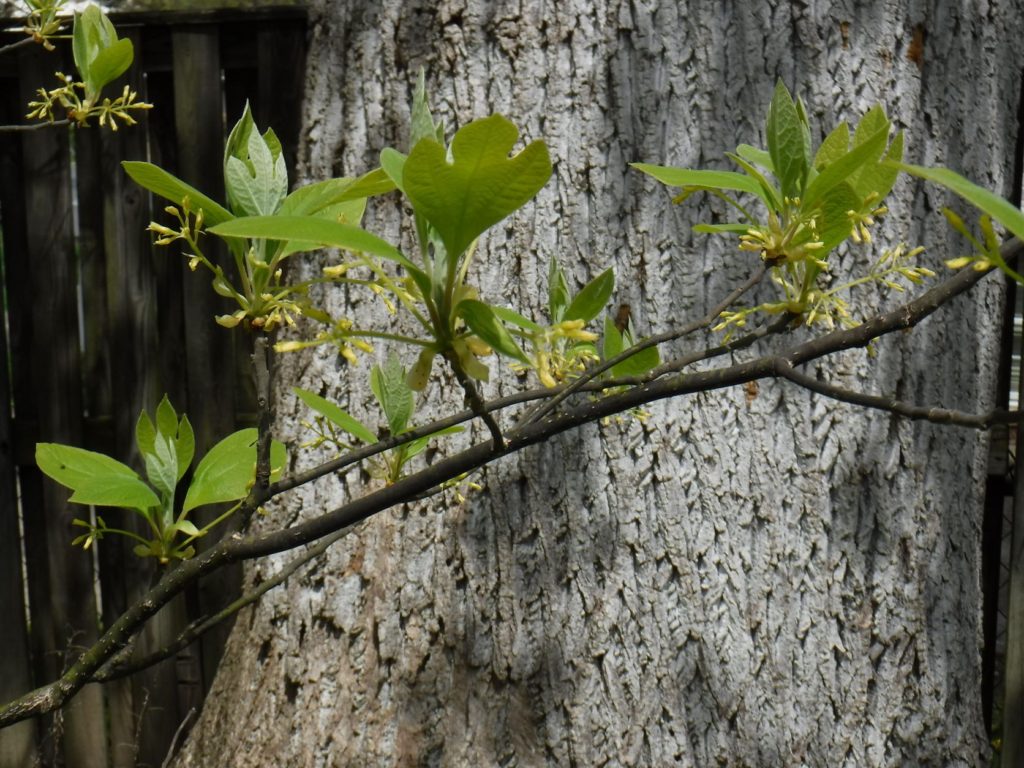
I learned by looking at the map that laurel wilt has also been detected in Sullivan County, Tennessee, on the Virginia border.
3) Spotted Lanternfly
This pest of grapes, tree fruits, and a wide variety of native trees is spreading in Pennsylvania, Delaware, New Jersey, and Maryland. It has also been found in Ithaca, NY, and in Connecticut. The populations in Virginia and West Virginia also continue to spread; a disjunct outbreak has been detected in Prince William County, VA. (south of D.C.). Most alarming are disjunct populations in Ohio on the West Virginia border and in Indiana on the Ohio River border with northern Kentucky. See map here.
The Indiana population has been present for several years. The affected woodland is close to RV parks and other facilities that make further spread likely.
California has established an external quarantine targetting the spotted lanternfly .
C. Wrestling with Continuing Issues:
1) States try to compensate for APHIS’ end of regulating the emerald ash borer and firewood
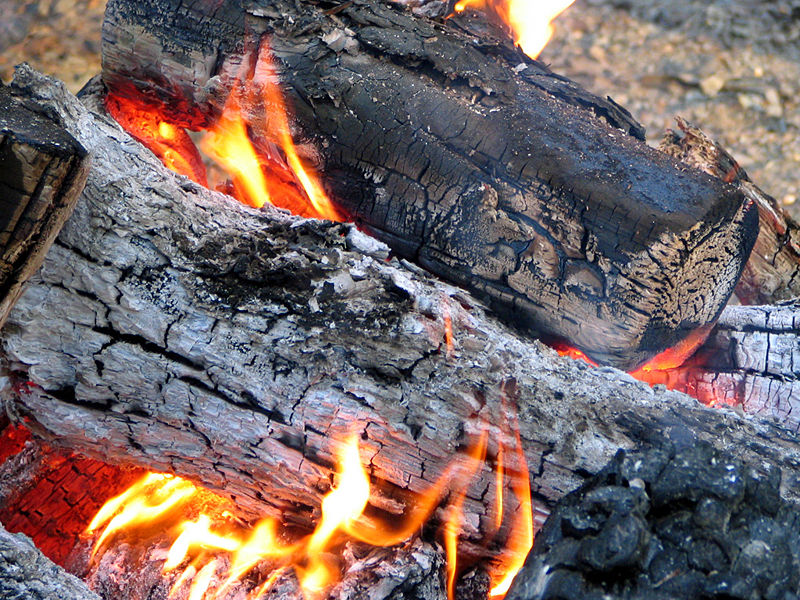
The members of the NPB have spent years discussing the pros and cons of continuing to regulate ash wood to contain the emerald ash borer (EAB). As I blogged earlier, APHIS has ended its regulatory program. One state – Minnesota – is seeking to use an APHIS procedure to get APHIS’ continued protection from importation of EAB-infested wood (presumably from Canada). Under the Federally Recognized State Managed Phytosanitary Program (FRSMP), a state petitions APHIS to recognize its program for a specific pest. If APHIS grants that recognition, the agency will support the state by continuing to regulate imports of that pest or commodities that might transport the pest when they are destined for the regulating state.
The states have also tried to formulate a system to maintain regulation of firewood (nearly all states’ firewood regulations were based on the federal regulation of all hardwoods to prevent transport of the EAB). As part of this process, the NPB developed guidelines for adoption of regulations by the individual states (available here). The NPB members are just beginning to explore whether states might set up third-party certification system(s). Among the challenges to any harmonization are states’ differing legal authorities and disagreement on what threat levels should be applied, and for how long.
2) New information about the Asian longhorned beetle in South Carolina
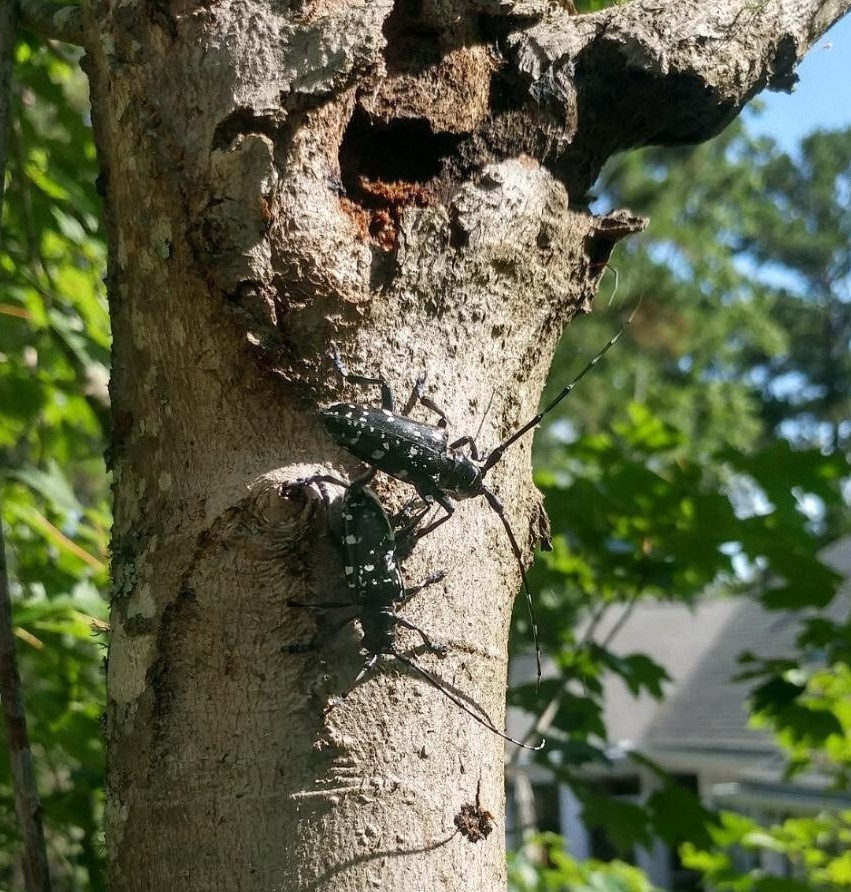
South Carolina authorities reported that dendrological studies indicated Asian longhorned beetle (ALB) had been present near Charleston, S.C. since 2012, and possibly earlier. The population has the same genetic makeup as the outbreak in Ohio. This might be explained by either transport of infested wood from Clermont County, Ohio, or that wood packaging entering Charleston harbor came from the same part of China. (Charleston is an important port.) In South Carolina, ALB attacks primarily red maple – as is true at the other infestation sites. However, maple densities are much lower in the swamps of South Carolina and scientists don’t know whether the ALB will fly farther or intensify attacks on other host species. Other questions raised by differences between South Carolina and other, more northern, outbreak sites include possible changes in the beetle’s life cycle and flight periods.
Authorities noted the extremely difficult conditions, which impede survey and control efforts – which I described in an earlier blog.
One innovation was sharing of resources: staff from the North Carolina and Tennessee departments of agriculture went to South Carolina to help with surveys. The Resource Sharing Initiative was started a few years ago as a collaborative effort of APHIS and the NPB. This was the first time states tried it. There were several issues that had to be worked out. One issue was the long time it takes to train people to recognize ALB symptoms. All three states’ officials said the project was worthwhile.
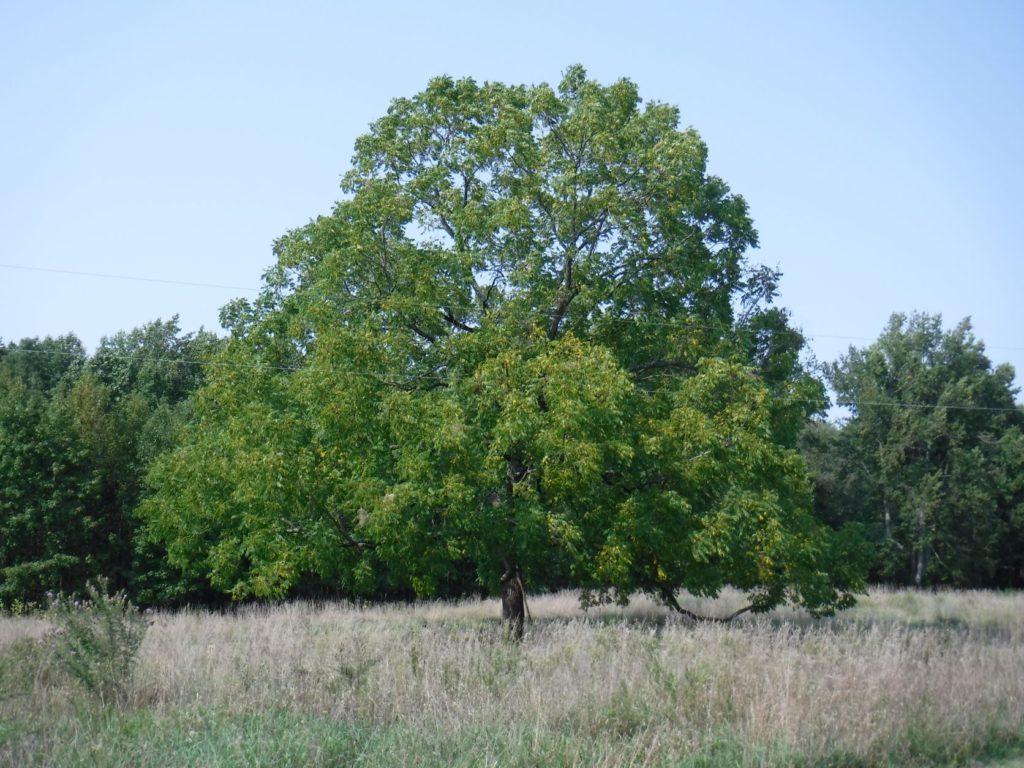
3) Recinding quarantines of thousand cankers disease of walnut
States which adopted quarantines targetting this insect/pathogen complex a decade ago now think that it poses little risk to black walnut (Juglans nigra) growing in its native range (as distinct from trees planted in the West). Several are in the process of rescinding their quarantines. I think these states have considered the science carefully and are taking the appropriate action.
4) Nursery self-certification – System Set Up; Will Nurseries Participate? Will Customers Support the Process?
Craig Regelbrugge of AmericanHort noted that the SANC program has now been officially launched – it has graduated from being a pilot program. [SANC stands for Systems Approach to Nursery Certification] Participants are exploring incentives to recruit wider participation by nurseries that produce plants and how to get support from plant retailers. SANC is conceived as an elite program for the best nurseries and marketplace leaders. It was never intended to be a remedial program to clean up problem issues such as the P. ramorum debacle. To work, it seems to me, SANC will need to find a way to persuade customers to want to pay more for quality plants. Hence the critical importance of getting retailers involved.
Posted by Faith Campbell
We welcome comments that supplement or correct factual information, suggest new approaches, or promote thoughtful consideration. We post comments that disagree with us — but not those we judge to be not civil or inflammatory.
For a detailed discussion of the policies and practices that have allowed these pests to enter and spread – and that do not promote effective restoration strategies – review the Fading Forests report at http://treeimprovement.utk.edu/FadingForests.htm
